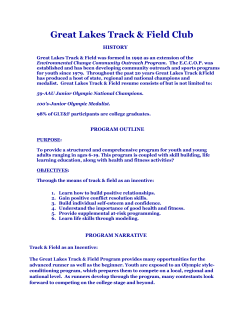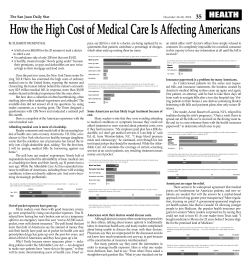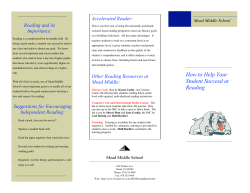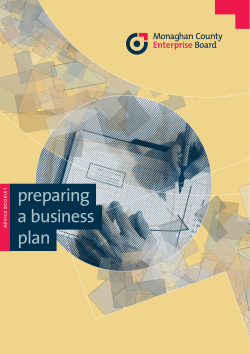
Believe That All Students Can Learn
01-Carbo-45301.qxd 5/30/2007 11:20 AM Page 5 1 Believe That All Students Can Learn Y ou have the power within you to become a great teacher of reading, to change your students’ lives, to affect generations. When you teach your students to love reading and to read well, they in turn can help their parents and siblings—and, eventually, their own children—learn to read. As you forge links to literacy with your students, you empower them to become all that they can be, to contribute to society, to become good citizens. Great teachers release and nurture their students’ natural power to learn, and they believe that all of their students can learn to read well. THE GRAND PURPOSE OF THIS BOOK The purpose of this book is a grand one: to help you to become a great teacher of reading. If you already are such a teacher, then this book’s purpose is to enhance your greatness. Your first and most important step toward becoming a great teacher of reading is to keep your own power strong. Why? Because there has never been a more challenging time to be a teacher. You are standing on the front lines of a battle for our children’s future. Consider these facts (which are presented in greater detail in Appendix B): • Research tells us that each year reading for pleasure declines (Dillon, 2005a), that less than one-third of our students in Grades 4, 8, and 12 are 5 01-Carbo-45301.qxd 6 5/30/2007 11:20 AM Page 6 Becoming a Great Teacher of Reading reading at or above their grade level (Dillon, 2005b), and that boys’ dislike for school keeps rising. After fourth grade, boys fall far behind girls in reading; by twelfth grade, smaller and smaller percentages of boys are attending college due to their low levels of literacy (Newkirk, 2003). • Even more foreboding, the literacy levels of our college graduates are falling. Only 31% of our college graduates demonstrated reading proficiency on the National Assessment of Adult Literacy given in 2003 by the Department of Education, compared to 40% in 1992. And 14% of college graduates scored at the basic level, which demonstrates an ability to read and understand only short, commonplace texts (Dillon, 2005c). • Despite the fact that little to no research supports the use of large amounts of worksheets or skill sheets to teach reading, the number of worksheets has grown since 1985. (One likely reason is that consumable workbooks bring in huge amounts of revenue for basal programs and others.) Some basal programs have 1,000 reading worksheets or more just for first grade—about six worksheets every school day! Six worksheets could take a student one and a half to two hours to complete. Is it any wonder that, year after year, reading for pleasure continues to decrease throughout the grades? • A high percentage of U.S. students appear to be performing at the proficient reading level on their state exams, but a very low percentage perform at that level on the more valid and accurate National Assessment of Educational Progress (NAEP). For example, 87% of Georgia fourth graders scored at the proficient level on their state exam, but only 26% of them scored at the proficient level on the NAEP (Ravitch, 2005). Easy state tests are extremely dangerous; they make it appear that students are doing well when they’re not, lulling the public into keeping the reading instruction that exists, rather than looking into why their students are actually doing so poorly (see Figure 1.1). • It’s not just the enormous overemphasis on the big test administered at the end of the school year that creates a barrier to learning. It’s also the yearlong, endless testing and test practice, the continual fear of failure, and the high levels of stress—these all have a devastatingly negative effect on learning. While small amounts of stress can increase motivation, large doses cause fear, decrease motivation, and reduce the ability of students to think and perform at high levels (Sprenger, 1999). Yet we continue to go round and round, getting nowhere. There’s no time for reading enjoyment because students have to prepare for tests. Students have to prepare for reading tests because scores are low. Scores are low because students don’t read. Students don’t read because they don’t enjoy reading. And on and on and on. • The first cousin of overtesting is an overemphasis on skills teaching. And yet few of the hundreds of skills and subskills have been validated as being necessary for children to become good readers! In fact, as I’ll demonstrate throughout this book, at-risk readers who have made great 01-Carbo-45301.qxd 5/30/2007 11:20 AM Page 7 Believe That All Students Can Learn leaps in reading ability have spent most of their time reading books and short stories they enjoy with the aid of modeling methods, with only small amounts of time spent on reading skills. Unreasonable increases in skill work and testing invariably result in less voluntary reading and lowered student motivation (Foertsch, 1992). All of us could agree that these are serious problems. But what are today’s solutions to these problems? Unfortunately, instead of counteracting the lack of interest in reading by making learning to read easy and fun, we keep testing our students more and more; developing longer and more complex reading manuals for teachers to wade through; increasing the use of boring worksheets; requiring the teaching and re-teaching of a multitude of reading skills that are often unnecessary for many students; ignoring what our students say they want to read; and teaching to the tests. In other words, much of what is being done today to improve literacy disregards important research in reading, learning styles, and how the brain learns. These socalled solutions are likely to worsen the reading problem and increase the number of bored, stressed students who dislike reading—exactly what we don’t want. BEGINNING OUR JOURNEY TOWARD GREATNESS Keeping all this in mind, let’s begin our journey toward greatness together and see how we can help all students learn to read with ease and enjoyment. Reading enjoyment is of primary importance because we know that students who love to read tend to read a great deal, improve their reading steadily, perform well on reading tests—and become lifelong readers (Guthrie, Shafter, & Huang, 2001). Today, many of our students dislike or even hate reading. James was one of those students. Let’s see what we can learn from his true story. James was a poor, black, male Mississippi ninth grader reading four years below his grade level. What we’ll learn from his story can be applied to all grades. As ninth grade begins, this is what he said to his reading teacher, Lori Lambert: August 1995: I hate to read. You will never make me read, and I will never read! At the time, James was 16 and felt he had no future. No matter how hard he had tried, each year his textbooks became more difficult, and he couldn’t catch up. Deep inside, he felt scared and stupid. Outwardly, he showed only anger. Toward the end of ninth grade, this is what James said quietly to his teacher. May 1996: I read every night before I go to bed. I especially like to read Sports Illustrated. Before this class I hated reading. Now I want to read everything that interests me, especially sports. 7 01-Carbo-45301.qxd 8 5/30/2007 11:20 AM Page 8 Becoming a Great Teacher of Reading With the help of the key reading strategies you’ll find in this book, James immediately started reading better. In fact, he enjoyed reading so much that he began to read every night before bed. In just six months, he gained two and a half years in reading comprehension, rising from a 5.1 to a 7.6 reading level. It had taken James 10 agonizing, failure-filled years to gain only five years in reading. Yet in ninth grade, he gained nearly half that amount in only six months. Not only was he able to leap forward in reading about eight times faster than he had in 10 years of schooling, in ninth grade James became a confident reader. What Worked for James and Why James’s ninth-grade reading program differed sharply from traditional reading programs for at-risk readers, which often place a heavy emphasis on reading skills and worksheets. Such programs have invariably widened the gap between good and poor readers at all grade levels (Allington, 1983, 1991; Applebee, Langer, & Mullis, 1988; Johnston & Allington, 1991; Pearson, 1992). In the reading lab that James attended, skill work was minimized. Instead, James learned about his “reading style” (his learning style for reading). He learned what his natural strengths were and how to study and make use of those strengths in all his classes (Chapters 4 and 5 discuss this topic in detail). He spent about 90% of his time in the lab reading highinterest stories that he chose, and only about 10% of his time on skill work directly related to those stories. The large amount of reading done by James helped him to increase his reading fluency, vocabulary, and comprehension (Nagy, Anderson, & Herman, 1987; Stanovich, 2000). Most important, James advanced quickly because the stories in the lab were all recorded in small amounts with a special, slow pace and chunked phrases that enabled him to follow along in a story easily and learn the words. (This method is described in Chapter 7.) After repeated listenings of a story, James would meet with his teacher, read a portion of the story aloud, discuss and summarize the story, and then answer a few comprehension and vocabulary questions. His reading program was challenging, fun, and fail-safe—all critically important factors for maximum learning to take place, according to current brain research (Armstrong 1998; Caine, Caine, McClintic, & Klimek, 2005; Jensen, 1998a, 1998b; Sprenger, 1999, 2003). For the first time, James was able to relax and enjoy reading. As we saw in James’s second quote above, some of his favorite stories came from Sports Illustrated, which is written on about a tenth-grade reading level (even though he reached only a 7.6 reading level by the end of ninth grade). The specialized recordings of the stories enabled James’s teacher to continually stretch him with higher- and higher-level reading materials in which he was deeply interested. That stretching process was an important factor in his gaining 2.5 years in reading in only six months. What was not done in James’s reading program was also important. He was not continually tested, and he did not spend time practicing to take 01-Carbo-45301.qxd 5/30/2007 11:20 AM Page 9 Believe That All Students Can Learn Figure 1.1 A Sampling of NAEP Versus State Scores for Percent of Students Reading at the Proficient Level State NAEP State Test Georgia (Gr. 4) 26% 83% Alabama (Gr. 4) 22% 83% Texas (Gr. 8) 26% 83% N. Carolina (Gr. 8) 26% 88% Tennessee (Gr. 8) 27% 88% Compared to the National Assessment of Educational Progress (NAEP), results of many state tests indicate much higher percentages of proficient readers. Figure 1.2 James’s ninth-grade classmates at work in their Reading Lab with specially recorded books and stories. SOURCE: Photo courtesy of Ed Mayo Jr. High, Moss Point, MS. 9 01-Carbo-45301.qxd 10 5/30/2007 11:20 AM Page 10 Becoming a Great Teacher of Reading any tests. James was tested only twice—once in November at the inception of the program, and once in May at the end of the program. The GatesMacGinitie Achievement Test was group administered to determine the reading growth of the 45 students who attended the reading lab; they made an average gain in reading comprehension of 2.2 years in six months. From November to May, word counts were not done, stories that bored the students were not used (the students’ interests determined most of the reading material in the lab), few worksheets were used, and important reading time was not wasted. Note: After highly at-risk readers make substantial reading gains, then some reading materials outside of their strong interests can be introduced. The “right” reading work for any student should result in increased reading achievement and motivation and increased reading for pleasure. The work should be interesting and exciting, thereby tapping into the most powerful kind of memory, emotional memory (Jensen, 1998a, 1998b; Sprenger, 1999). It should make use of the students’ reading style strengths and preferences. In short, learning to read should be easy and fun. When it’s difficult and boring, it’s invariably the wrong work! Beating the Odds and Changing Lives For a moment, let’s move the clock back. In the late spring of 1995, James’s teacher, Lori Lambert, attended one of our trainings. On her first break, she called her principal and requested that he assign her the lowest readers in their school for the next school year. She was assigned students who were reading three to seven years below grade level. By the end of that school year, the headline in the local newspaper, the Mississippi Press, read: “Reading program changes students’ lives” (Anglin, 1996; Figure 1.3). What was accomplished in just six months with Lambert’s high-risk, older students is all too rare today. Research tells us that once students fall far behind in reading by third grade, they rarely catch up. By the time they reach middle school or high school (if they stay in school that long), their chances of closing the gap are extremely slim. Yet Lambert’s students made average gains of 2.2 years in reading comprehension in just six months (Figure 1.4). Not only were their reading gains extremely high, the reading program was easy and fun for them. The students felt little stress, could choose what they wanted to read, spent most of their time reading and enjoying what they read, and were able to move to higher-level reading materials quickly with the aid of the modeling reading methods and special recordings described in Chapters 6 and 7. GREAT TEACHING AND IMPRESSIVE RESULTS K–12 Use of the strategies in this book has helped good teachers of reading to become great teachers. These teachers demonstrate repeatedly that even 01-Carbo-45301.qxd 5/30/2007 11:20 AM Page 11 Believe That All Students Can Learn Figure 1.3 By the end of the school year, this was the headline in The Mississippi Press. SOURCE: Photo by William Colgin, Staff Photographer, The Mississippi Press. Figure 1.4 Reading Gains of At-Risk Ninth Graders in Six Months % of Students Reading Gains in Years 25% 3.0 to 6.6 50% 1.0 to 2.9 10% .6 to .9 15% >.6 The average gain in reading comprehension for 45 students was 2.2 years on the Gates-MacGinitie Achievement Test. 11 01-Carbo-45301.qxd 12 5/30/2007 11:20 AM Page 12 Becoming a Great Teacher of Reading the most at-risk students can achieve, behave well, and surpass academic expectations. When teachers have implemented the strategies in this book at a high level schoolwide, visitors sense a feeling of joy, humor, vitality, playfulness, and a strong focus on learning. Here are results from some of our model districts, schools, and reading labs: Bledsoe County (Bledsoe, TN, K–12, rural Appalachia, low socioeconomic). One of the early success stories came from Bledsoe County (Snyder, 1994). In the mid-1980s, Bledsoe schools averaged a stanine score of only three in reading—not unusual for a rural school district in a poverty area. After three years of reading styles strategies, Bledsoe schools gained two stanines in reading, equaling state and national averages, and received the Governor’s Award for Educational Excellence. Marion Elementary School (Marion, MI, PreK–5, rural, 99% White, onethird of families have no phones, high unemployment, 61% free or reduced lunch). In 2001, 42.1% of the fourth graders at Marion Elementary scored at the proficient reading level on their state test (the MEAP). After three years of reading styles, the percentage of fourth graders scoring at the proficient level rose to 87% in 2005, and to 95% in 2006. Ocean City Elementary School (PreK–5, Ft. Walton Beach, 70% low socioeconomic, 30% ESE). After implementing reading styles, the school closed the reading gap between their White students (from 65% proficient in 2003 to 73% proficient in 2005) and African American students (from 50% proficient in 2003 to 72% in 2005), and narrowed the reading gap for economically disadvantaged and learning-disabled students. O’Connor Elementary School (Victoria, TX, PreK–5, 74% Hispanic, low socioeconomic, schoolwide Title I). In 1993, after one year of reading styles, O’Connor rose from 19% to 80% of its students passing their state reading test. By 2006, over 97% of O’Connor’s 500-plus students passed math, reading, and writing at all tested grade levels. West Amory Elementary School (Amory, MS, PreK–2, rural, 58% free or reduced lunch, schoolwide Title I). After three years of reading styles, in 2002 West Amory was one of three Title I schools to achieve the highest NCE gains in Mississippi (their students gained 38.5 NCEs in reading in three years), and won the IRA Distinguished Title I School Award. West Haverstraw Elementary School (North Rockland, NY, suburban, PreK–6, 79% free or reduced lunch, 63% limited English proficiency). Between 2003 and 2006, West Haverstraw Elementary used reading styles strategies and rose from a school “In Need of Improvement,” to the “Exemplary List of Most Improved Schools,” to a “High Performing/Gap Closing” school in Language Arts and Math (New York state’s highest rating). During that same period, discipline referrals and suspensions dropped by 50%, according to Assistant Superintendent Robert Katulak. Immokalee High School Reading Lab (Collier County, Naples, FL, Grades 10–12, 94% minority). After only seven weeks, 21 regular English students gained two years in reading comprehension, and 23 ESE students gained seven months during that same period on the Gates-MacGinitie Reading 01-Carbo-45301.qxd 5/30/2007 11:20 AM Page 13 Believe That All Students Can Learn Figure 1.5 Two third graders work at a bulletin board/learning station. They are separating the events from several stories, and then sequencing the events. SOURCE: Photo courtesy of O’Connor Elementary School, Victoria, TX. Achievement Test. By the second year (2003), Bridgett Morris, reading lab teacher, wrote: We are bursting at the seams for this term. There are about 200 students utilizing the lab—all English classes, the FCAT skills class, and some ESE classes. We’ve also created a movable Carbo Lab for the ESOL students at lower levels. Things are going great! Grand Caillou Middle School (Houma, LA, Grades 4–8, 85% free or reduced lunch, 54% minority, 11% migrant). Grand Caillou’s graduates outperformed their more privileged counterparts in their district, and the district’s high school teachers reported that “Grand Caillou graduates stand out. They like to read more than other kids, take more interest in their classes, and know what they need to do to learn.” The school was so outstanding that Grand Caillou principal Judy Gaspard became the only American invited to present at the United Nations Conference of 2002. Gaspard was asked to join an international panel that honored innovative programs that promote knowledge, human rights, and peace education. 13 01-Carbo-45301.qxd 14 5/30/2007 11:20 AM Page 14 Becoming a Great Teacher of Reading Besides high academic gains, Gaspard (personal communication, June 18, 2006) reported sharply decreased aggressive student behavior. She described this dramatic change: Before the program there were two to three fights a day. In these fights the kids physically injured each other. After the first year of the program we had an average of two fights a month, which mainly involved words of anger. The third year we may have had a fight every two months, usually between students new to our school. Then fights became a thing of the past. Students were talking to us about their problems before it became a fight. The students were not accepting fistfights as a way of settling their differences. Figure 1.6 Using the strategies in this book, O’Connor Elementary rose from 19% to 80% of their students passing their state reading test. By 2001, 98% passed, and O’Connor received an “Exemplary” rating from the Texas Dept. of Education. O’Connor maintained those high scores through its last testing in 2006. From 19% to 99% Passing and an Exemplary Rating 100 90 80 98% passing 98% passing 2001 2006 80% passing 70 60 50 40 30 20 10 19% passing 1993 1994 HOW TEACHERS PERCEIVE AT-RISK READERS Great teaching often begins with major changes in how we perceive our students. So how do teachers perceive at-risk readers? I’ve asked about 4,500 teachers to describe the behavior of their at-risk readers. Teachers’ responses spill forth rapidly, and their most common answers are decidedly negative. Their at-risk readers, they say, are angry (the most common response), frustrated, resentful, lazy. They are class clowns, withdrawn; they act out. The list goes on until I stop the activity. 01-Carbo-45301.qxd 5/30/2007 11:20 AM Page 15 Believe That All Students Can Learn Figure 1.7 Teachers’ Descriptors for At-Risk Readers angry* defeated frustrated scared withdrawn hopeless unmotivated slow feel stupid explosive disruptive embarrassed distracted hyperactive unhappy off-task disorganized impulsive sad need attention hyperactive short attention span don’t care intimidated class clowns lost Most common responses of approximately 4,500 teachers from across the United States between 1998 and 2005. * “Angry” was the most common response. My next question is: How much class time do you spend dealing with the negative behavior of at-risk readers? The most common estimates from teachers are a whopping 50% to 90% of their class time. Apparently, teachers spend an enormous amount of their teaching time thinking about and trying to improve or “handle” the negative behaviors of their at-risk readers, especially at the middle and high school levels. Undoubtedly, this problem with behavior has contributed to the use of scripted, rigid reading programs—precisely what most teachers and at-risk readers don’t need. My last question is: How do you feel about what you’re accomplishing with your at-risk readers? Here the answers are slow at first, and then they come forth in spurts. Many teachers say they feel frustrated, tired, ineffective, inadequate, sad, hopeless, burned out. Some of their answers mirror the words they use to describe their students! 15 01-Carbo-45301.qxd 16 5/30/2007 11:20 AM Page 16 Becoming a Great Teacher of Reading They also say that contributing to their problems are the rigidly mandated hundreds of skills at each grade level, the countless piles of paperwork that distance them from their students, the endless test preparation, and the never-ending tests throughout the school year—all working against student engagement and achievement. These teachers are correct! The pressure on teachers today is enormous. But most teachers still say that they became teachers to make a difference. They want to do a good job, they want to be excited about teaching, and they’re willing to work hard to help their students. HERE’S THE GOOD NEWS The good news is that the often sad, fearful, angry behaviors of at-risk readers subside when these students experience success. For that to happen, reading programs need to be easy and engaging, with large doses of brainfriendly strategies that are successful, respectful of student differences, and fail-safe. Then learning accelerates, and students become excited about and interested in what they’re learning. Figure 1.8 Style of At-Risk Reader Highly Tactile Needs Mobility Highly Kinesthetic Prefers Choices Global Needs Structure Prefers Group Work Remember that constant failure is poisonous to both students and teachers. It causes high levels of stress, and stress dulls the mind and creates anger and fear. Caine et al. (2005) explain this phenomenon, stating: “Excessive stress actually short-circuits the brain/mind and reduces the ability of people to engage their own higher-order capacities” (p. 30). Excessive frustration and stress sabotage students’ abilities, make them feel stupid, and often lead to unacceptable conduct. Psychologists explain that many students prefer to be regarded as “behavior problems” rather than as slow or stupid. On the other hand, positive emotions have the opposite effect. They motivate young people and create excitement (Jensen, 1998a). The powerful teaching strategies in this book have helped students to read substantially better and to feel smart and capable. One visible side effect has been diminished negative behavior. And that enables teachers to spend more time teaching, use more effective strategies, and enjoy teaching. Success breeds more success. 01-Carbo-45301.qxd 5/30/2007 11:20 AM Page 17 Believe That All Students Can Learn THE POWER OF TEACHING TO STUDENTS’ STRENGTHS We all need to perceive students in terms of their strengths rather than their disabilities. Unfortunately, many teachers do not teach to students’ strengths—and that can be heard clearly in their descriptions of their students: They can’t sit still, can’t hear sounds. They’re dyslexic, get bored easily, disrupt others. They’re lazy—and on and on. These behaviors are often the result of boring reading materials and inappropriate teaching methods that don’t nurture our students or engage their interests, don’t provide appropriate modeling, don’t compensate for their weaknesses, and don’t teach to their strengths. This is especially true for at-risk readers who tend as a group to be global, tactile/kinesthetic learners. These youngsters benefit from high-interest, challenging reading materials, structured choices, powerful modeling of texts, hands-on skill work, and opportunities for mobility and working in groups (Figure 1.9). Many students are at risk because they don’t receive the kind of instruction and materials that would enable them to learn easily. The rest of the chapters in this book provide strategies that accommodate the interests and strengths of all your students, especially at-risk readers. Figure 1.9 Powerful Strategies for At-Risk Readers • Focus on comprehension, enjoyment, interests, and learning strengths. • Provide choices of high-interest reading materials. • Use reading methods that accommodate students’ strengths. • Use powerful assisted reading methods. • Provide sufficient repetition. • Practice skills with hands-on games. • Reduce visual dyslexia with colored overlays. • Make learning to read easy, enjoyable, and fail-safe. YOU CAN CHANGE AND SAVE LIVES Even though James was angry and belligerent at the beginning of ninth grade, his teacher was able to see beyond his outward behavior. Her confidence and belief in his abilities as a learner and in her own ability to teach him persuaded James and his classmates to try and provided the strong motivation they needed to succeed. Let’s not forget the enormous pain and suffering caused to James and his classmates during their first 10 years of school, and the incalculable loss of all the information they might have 17 01-Carbo-45301.qxd 18 5/30/2007 11:20 AM Page 18 Becoming a Great Teacher of Reading learned had they been able to read their textbooks along the way, as well as the joy they should have experienced by reading books that excited and interested them. We know that risk is pervasive and terribly dangerous. Being an at-risk reader places a student at risk of other factors. Compared to average and good readers, students with low reading scores are three times more likely to fail their courses, four times more likely to be referred for special education, twice as likely to be absent excessively, more likely to be retained, suspended, drop out, do jail time, and even to commit suicide (Frymier et al., 1992; Kozol, 2005). According to the editor of Jails, about 80%–85% of prisoners read at a second- to third-grade reading level. Since there are fewer and fewer jobs in this society for low-level readers, those who can’t find work have a greater risk of committing a crime and going to jail. Great teachers change the lives of their students by enabling them to perform well in school. Ultimately, they provide their students with a better chance to obtain a good job and live a better life. They decrease the crime rate and the number of suicides. The most important gift teachers can give to their students is to teach them to read well, and to make this process so easy, enjoyable, and fail-safe that they become lifelong readers. RESEARCH-SUPPORTED STRATEGIES More than 20 years of research clearly indicates that when students are taught through their reading styles—their strongest learning pathways— their ability to learn to read accelerates (Barber, Carbo, & Thomasson, 1998; Bradsby, Wise, Mundell, & Haas, 1992; Brooks, 1991; Carbo Reading Styles Program, 2000; Hodgin & Wooliscroft, 1997; LaShell, 1986; Oglesby & Suter, 1995; Skipper, 1997; Snyder, 1994, 1997). All of the strategies in this book were developed for and are used extensively in the Carbo Reading Styles Program (CRSP), which has been identified and listed as a research-based language arts program by the Education Commission of the States, the National Staff Development Council, the Northwest Regional Lab (funded by the U.S. Department of Education), the Milken Foundation, and the New England Comprehensive Center. See Appendix C for more information and research. IN THE NEXT CHAPTER . . . In Chapter 2, I’ll lay out the 12 guiding principles that pave the way for success in teaching reading to any students, anytime, anywhere. Please remember: Our aim, as great teachers of reading, is to create lifelong readers who read because they enjoy it and comprehend at high levels!
© Copyright 2025










